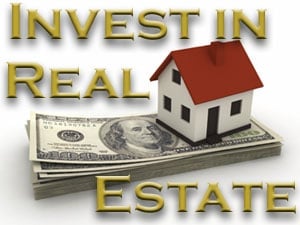What awaits local real estate markets in 2025?
Are you thinking about entering the real estate market in 2025? In today’s post, Allen Tate’s top minds come together to predict what will happen in 2025. While no one has a crystal ball and we’re not economists, our predictions are pretty much in line with those of other national real estate publications, So we are confident that this article will offer an educated estimate of what to expect in the 2025 real estate market. Interest rates All signs pointed to lower interest rates heading into 2024. However, things didn’t go exactly as we expected and interest rates remained quite stubborn for much of the year. The top minds at Allen Tate echo the predictions of most economists and anticipate that rates will be around six at the beginning of the year and end the year a little lower, around 6.25%. Given the continued rates of home appreciation in the Carolinas, it makes no financial sense to continue waiting for “the right time to buy,” and we predict that more potential buyers will come off the bench and into the housing market in 2025. . Let’s see exactly what our team of experts predicts for 2025 regarding mortgage interest rates: Mark McGoldrick, Executive Vice President of Howard Hanna Mortgage predicts mortgage rates will be between 6.25-6.5% Neal Hank, President, Allen Tate/Beverly-Hanks predicts mortgage rates will be around 6.5% Phyllis Brookshire, Senior Vice President of Operations, Allen Tate Realtors predicts mortgage rates will be in the 6% range Eric Heintschel, Chief Financial Officer, Allen Tate Company, predicts that we will see interest rates between 6 and 6.5% in the first half of the year and between 5.75% and 6.25% in the last half of 2025. Gary Scott, President, Allen Tate Companies predicts mortgage interest rates will be in the low 6% range Inventory Experts predict we’ll see the highest for-sale inventory since December 2019, a welcome relief, especially for first-time buyers. If you buy in 2025, you can expect to experience a slower-paced and much less competitive market than we have experienced in a long time. Here’s what our experts shared on the topic of inventory: Mark McGoldrick: Inventory will increase. We’ll see it rise early in the year as interest rates drop, and later in the year, we’d expect inventory to rise even further as interest rates continue the downward trend. Neal Hank: Days on market have increased as well as months of supply of inventory (MSI)* this year and I think we will continue to see that in 2025. Baby boomers will downsize and buyers who have been on the sidelines for a couple of years finally enter the market. I expect the MSI at the national level to be above 4 and at the local level above 3. Phyllis Brookshire: MSI increases from 2 to 3 bass. In 2025, we will see an increase in DOM and MSI will follow that pace. Sellers who have been on the sidelines for the last few years will likely price their home as it should have been 2 years ago (when inventory was much tighter) and, as a result, their homes will stay on the market longer. . Eric Heintschel: Inventory will increase, but will peak in the spring; Locally in the Carolinas we will see an MSI of 3.3 and nationally we will see 4. *Anything below five months supply (MSI) is a seller’s market, anything between five and seven months is a balanced market, and anything over seven months becomes a buyer’s market. Price appreciation Nationally, price appreciation is expected to grow at a slower rate than in previous years. This will largely be due to the expected increase in inventory, thanks to falling mortgage rates. However, home appreciation rates remain hyperlocal, and in the Carolinas, we are likely to experience a higher appreciation rate as our area remains a very desirable place to live. Here’s what our experts predict in terms of house price appreciation by 2025: Phyllis Brookshire: Nationally, we will see an appreciation of 5-6%. Locally, the range could be 3-10% depending on where in the Carolinas you are. Neal Hank: Nationally 3%, Carolinas 5-5.5% Gary Scott: Stable nationally, Carolinas 6-8% Eric Heintschel: Nationally 3%, Carolinas 5-5.5% Mark McGoldrick: Nationally 2-3%, Carolinas 5-6% Inflation Inflation continues to trend downward, but there are some questions about where it could go in 2025, particularly in the second half of the year, as new economic policies are implemented as a result of the new administration. Here’s what our experts predict regarding inflation in the new year: Neal Hank: Inflation is falling and is expected to end the year in the range of 2.2-2.5%. Mark McGoldrick: Real estate, rentals, and insurance are where we saw most of the inflation increases in 2024. In 2025, those items should be pretty much under control. I don’t know if we will reach 2% without other developments in the workplace. I think we will see between 2.25 and 2.4%. Eric Heintschel: Inflation measures a reflection of policies and things that have happened in the previous 6 to 9 months. We will continue to see inflation trend downwards closer to the target. Due to possible tariffs and immigration policy, I think it will trend lower in the first half of 2025, but I am cautious about how it could rise again in the second half of the year. Phyllis Brookshire: We’ll see low 2s all the way up to 4 due to the factors Eric mentioned. _____________________________________ Visited 6 times, 6 visit(s) today
What awaits local real estate markets in 2025? Read More »











